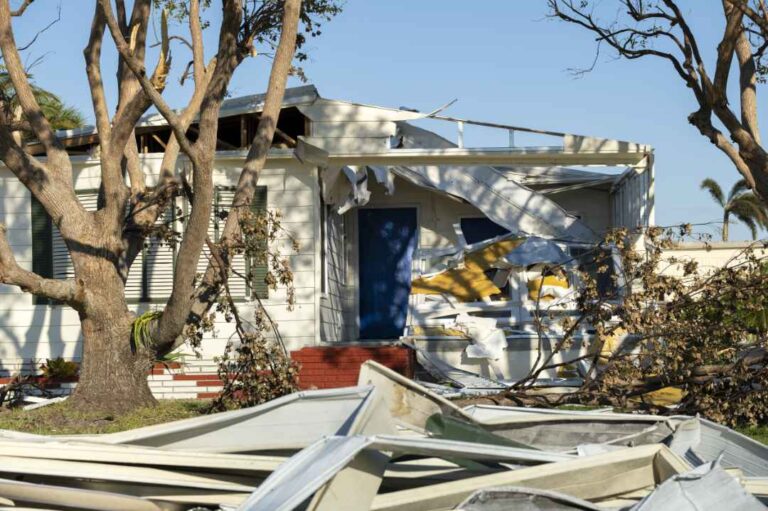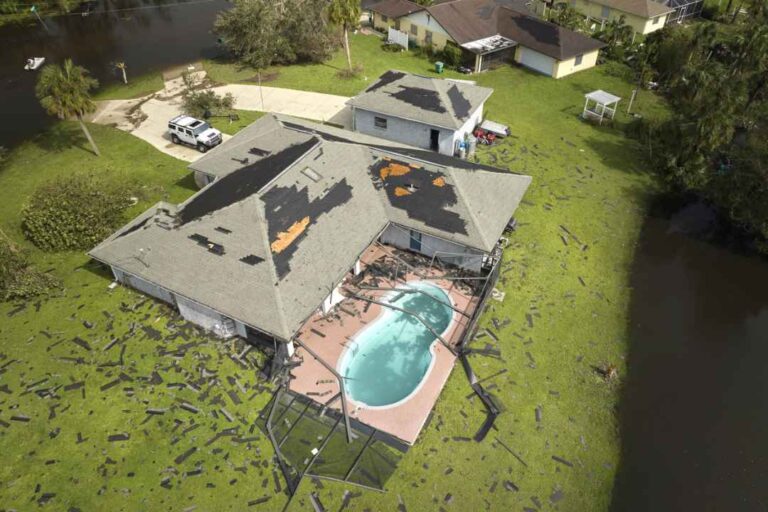Winter in Buffalo Grove is undeniably beautiful – the crisp air, the glistening snow, the festive lights. But for homeowners, the picturesque scenery can often hide a silent, destructive threat: ice dams. These thick ridges of ice that form at the edge of your roof can cause serious, costly damage to your home, from water leaking into your attic and walls to ruined insulation, stained ceilings, and even structural compromise.
At Seidel Exterior Group, we’ve helped countless Illinois homeowners recover from the aftermath of ice dams. However, our true passion lies in prevention. As your local experts in Buffalo Grove exterior solutions, we understand the unique challenges our Midwest winters present. The good news? Ice dams are largely preventable. By taking proactive steps now, before the snow truly flies, you can safeguard your home and avoid the headaches and expenses of winter water damage.
Let’s dive into the core causes of ice dams and 5 crucial ways you can prevent them on your Buffalo Grove home.
Understanding the Enemy: How Do Ice Dams Form?
The formation of an ice dam is a deceptively simple process, yet it can lead to complex problems. It’s essentially a chain reaction involving three key elements:
- Snow Accumulation: A layer of snow builds up on your roof after a snowfall.
- Uneven Roof Temperatures: Heat from your home’s interior escapes into the attic, warming the roof deck unevenly. The upper parts of the roof (over the heated living space) get warmer, while the eaves (which extend beyond the heated portion of your home) remain at or below freezing temperatures.
- Melt, Flow, Freeze Cycle:
- The warm spots on your roof melt the underside of the snow.
- This melted water flows down the roof, under the snow, until it reaches the colder eaves.
- As the water hits the freezing eaves, it refreezes, forming a barrier of ice.
- More melted water backs up behind this ice barrier, creating a puddle.
- This standing water eventually forces its way under your shingles and into your attic, walls, and ceilings.
The primary culprit behind uneven roof temperatures is often poor attic insulation and inadequate ventilation, allowing heat to escape from your living space directly to your roof deck. While fluctuating outdoor temperatures also play a role, controlling heat loss from within your home is your most powerful defense.
5 Ways to Prevent Ice Dams on Your Buffalo Grove Home:
1. Boost Your Attic Insulation: The Thermal Barrier
Problem: Heat from your living space rises and escapes into your attic, warming the roof deck. Solution: A well-insulated attic acts as a crucial thermal barrier, keeping the heat where it belongs – inside your home, not on your roof.
- Recommended R-Value: For Illinois, building codes often recommend an R-value of R-49 to R-60 for attic insulation. Many older Buffalo Grove homes may have significantly less, leading to substantial heat loss.
- Types of Insulation: Fiberglass batts, blown-in cellulose, or spray foam can all be effective. Blown-in insulation is often ideal for attics with irregular joist spacing or numerous obstructions.
- Benefits Beyond Ice Dams: Proper attic insulation not only prevents ice dams but also dramatically improves your home’s energy efficiency, leading to lower heating bills in winter and cooler interiors in summer. It’s one of the best investments you can make in your home.
Seidel Exterior Group’s Role: While our primary focus is the exterior, our comprehensive roof inspections will often identify inadequate attic insulation as a potential cause of existing or future ice dam issues. We can advise on recommended R-values and connect you with trusted insulation specialists in the Buffalo Grove area.
2. Optimize Attic Ventilation: Keeping It Cool
Problem: Even with good insulation, some heat will naturally rise into your attic. Without proper ventilation, this warm air gets trapped, elevating the roof deck temperature. Solution: A continuous, balanced attic ventilation system ensures that cold outside air enters the attic (intake vents) and warm, moist air exits (exhaust vents), keeping the attic temperature as close to the outdoor temperature as possible.
- Soffit Vents (Intake): These are typically located under your roof eaves and allow cool air to enter the attic. They need to be clear of insulation blockage to function effectively. Baffles are often installed to create an air channel between the roof sheathing and the insulation at the eaves.
- Ridge Vents or Box Vents (Exhaust): A continuous ridge vent along the peak of your roof, or strategically placed box vents, allows the warmer air to escape. This creates a natural airflow from soffit to ridge.
- Balanced System: For optimal performance, the amount of intake ventilation should be roughly equal to the amount of exhaust ventilation.
Seidel Exterior Group’s Role: During a roof inspection or replacement, we meticulously assess your existing ventilation system. We can identify blocked soffit vents, insufficient exhaust vents, or an imbalanced system. When installing a new roof, we prioritize proper ventilation design, ensuring a healthy, cooler attic environment.
3. Seal All Air Leaks: Plugging the Heat Highways
Problem: Gaps, cracks, and penetrations in your attic floor or ceiling allow heated air from your living space to bypass insulation and directly enter the attic. Solution: Identify and seal all potential air leaks between your home’s conditioned space and the attic.
- Common Leak Locations:
- Around recessed light fixtures (especially older, non-IC rated models).
- Around plumbing stacks, electrical wires, and vent pipes that pass through the ceiling.
- Around attic hatches or pull-down stairs.
- Gaps where interior walls meet the attic floor.
- Exhaust fan ducts (bathroom, kitchen) that terminate in the attic instead of venting outside.
- Sealing Methods: Use caulk for small gaps, spray foam for larger holes, and weatherstripping for attic hatches. Ensure all exhaust ducts lead outside the home, not just into the attic.
Seidel Exterior Group’s Role: While we don’t typically perform air sealing, our inspections can often point to areas where air leaks are likely contributing to hot spots on your roof. We can recommend a professional energy audit, which often includes the use of thermal cameras to pinpoint these elusive leaks.
4. Clear Your Gutters: Ensuring Proper Drainage
Problem: Clogged gutters prevent melting snow from draining away properly. Water backs up, freezes, and contributes to the growth of an ice dam. Solution: Thoroughly clean your gutters and downspouts before winter arrives.
- Remove Debris: Clear out all leaves, twigs, shingle grit, and other debris that can obstruct water flow.
- Inspect for Damage: Check for any sags, dents, or blockages in your gutters and downspouts that could hinder drainage.
- Gutter Guards: While not a complete solution for ice dams (as ice dams are primarily an attic heat issue), well-designed gutter guards can help prevent debris buildup, thereby ensuring melted snow can flow freely if it reaches the gutters.
Seidel Exterior Group’s Role: We offer comprehensive gutter cleaning and repair services. As part of our roof inspections, we always assess the condition of your gutters and downspouts, recognizing their critical role in preventing water backup that exacerbates ice dam issues.
5. Strategic Snow Removal: A Temporary Fix & Prevention Tool
Problem: Heavy snow loads on the roof provide the “fuel” for ice dam formation. Solution: Safely remove snow from the lower edges of your roof, especially after heavy snowfalls.
- Roof Rakes: Use a long-handled roof rake with wheels to carefully pull snow off the first few feet of your roof, staying safely on the ground. Be gentle to avoid damaging shingles.
- Professional Snow Removal: For very steep roofs, heavy snowfall, or if you’re uncomfortable with DIY removal, hire a professional roofing company (like Seidel Exterior Group) that offers safe snow removal services. Never use a shovel or pickaxe, which can severely damage your roof.
- Avoid “Melting” Methods: Do not use rock salt or other de-icing chemicals directly on your roof, as they can damage shingles and other roofing materials.
Seidel Exterior Group’s Role: While preventative measures are always best, if you find yourself with significant snow buildup, we can provide safe and effective snow removal services to mitigate the immediate risk of ice dam formation and potential leaks.
Don’t Let Winter Win: Partner with Seidel Exterior Group
Living in Buffalo Grove means being prepared for the unique challenges of Illinois winters. Ice dams are a significant threat, but they don’t have to be an inevitable part of your winter experience. By focusing on proper attic insulation, robust ventilation, effective air sealing, clear gutters, and strategic snow removal, you can dramatically reduce your risk.
At Seidel Exterior Group, we’re more than just a roofing company; we’re your local partners in protecting your home. If you’re concerned about ice dams or want to ensure your home is fully prepared for the upcoming winter season, contact us today for a comprehensive roof and attic assessment. We’ll help you identify potential problem areas and implement the right solutions to keep your Buffalo Grove home warm, dry, and ice-dam-free.



